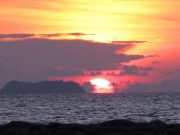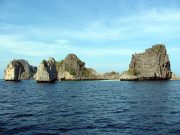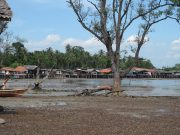Thailand's Island Paradise
Koh Lanta is the jewel of the Andaman Sea, situated in south western Thailand, and lying just a short distance from the mainland province of Krabi. Koh Lanta is perfectly located for some of the best diving in Thailand.
Although tourism is increasing every year, Koh Lanta manages to keep her laid-back atmosphere, natural beauty and friendliness. You'll find our dive school located at Lanta Castaway Beach Resort at the south end of Long Beach.
The Mu Koh Lanta Archipelago actually consists of 52 islands, 15 of which are under the control of the Koh Lanta National Marine Park. 12 islands are inhabited from which the two major islands are; Lanta Yai and Lanta Noi.
And of course, many of the smaller islands around Koh Lanta provide some of the best scuba diving in Thailand.

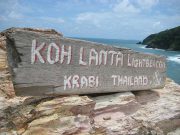
Koh Lanta Noi is the smaller of the two islands and is slowly starting to develop with limited tourist facilities, and the old life style and traditional styled houses can still be seen and make it worth a visit.
Exploring The Islands
Koh Lanta Yai is approximately 4km wide and 25km long and boasts 9 fantastic, white sandy beaches, stretching almost the entire length of its sunset west coast.
The east coast of the island is mostly mangrove swamps, which provide an important breeding ground of many marine species, including sharks.
The main village of Ban Sala Dan lies to the north, with a jungle covered hill range running down the length of the island to the south, separating the mangroves of the east coast from the long beaches of the west.
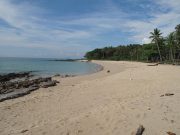

The island population contains a diverse cultural mix with Thai-Muslim, Thai-Chinese and the original Sea Gypsies living together in harmony on the island.
A paved government road runs from Ban Sang Ka Ou, the Sea Gypsy village in the south east of the island, up the east coast to Ban Saladan, and then down the west coast to the national park in the far south western tip of the island.
It’s impossible to get lost on this island!
Traditional Way of Life
With its relaxed atmosphere and slow pace of life, the fast pace of life elsewhere is soon forgotten as the enchanting beaches, thick jungle, stunning sunsets and coral rimmed beaches take over.
The 20,000 inhabitants have a traditional economy of fishing, coconut plantations, rubber plantations, rice paddies, prawn farming and fruit. This economy is now supplemented with the growing tourist industry.
You won't find a KFC, Starbucks or MacDonalds here, but you will find long sandy beaches with plenty of space to relax, rustic beach bars offering fresh seafood and sunset cocktails, and local family run restaurants by the side of the road selling cheap and delicious Thai food.
How to Get Here
We are very well connected to the mainland by a car ferry which runs continually from 5 am to midnight, and by many passenger ferry services to neighbouring islands, Krabi Town, and Ao Nang.
It’s also very easy to get to Koh Lanta by ferry from Koh Phi Phi, Phuket, Koh Jum, and the many smaller southern islands, such as Koh Mook, Koh Kradan, Koh Libong, and Koh Lipe.
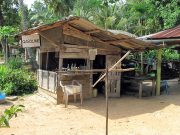

Frequent minivan services connect the island via car ferry to Krabi Town, Krabi Airport, Trang, Phuket, and Phuket Airport. Private transfers can also be booked to Khao Lak or Khao Sok National Park.
It’s also easy to get to Koh Lanta from the Gulf of Thailand, including Koh Samui, Koh Phan Ngan and Koh Tao.
Getting Around
Getting around Koh Lanta is relatively easy. The island has a well-developed road network, and transportation options include motorbike rentals, taxis, and tuk-tuks. Renting a motorbike is a popular choice for many visitors, as it allows for greater flexibility and the freedom to explore the island at your own pace. Bicycles are also available for rent, providing an eco-friendly way to get around.
Best Time to Visit
If you’re planning a trip to visit us then you’ll also want to know all about the island’s weather and climate, and the best time to visit Koh Lanta for diving, which is normally mid October to mid May.
The island is of course open all year round, however the national park is closed during the summer monsoon season, when we can expect stronger winds and rain from the west which help to replenish the islands natural water supply and keep us cool!
Koh Lanta Diving
Koh Lanta, due to her location, is one of the best dive destinations in the southern Andaman Sea.
There are a number of superb dive sites just a short boat trip away: Koh Haa to the west, Koh Rok to the south, and Hin Daeng and Hin Muang to the south west.
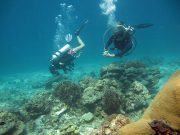
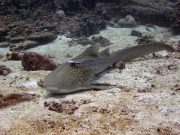
And with the Bida islands, Koh Phi Phi, Shark Point and Anemone Reef, Hin Klai and the HTMS Kledkaeo wreck to the west, we have easy access to some of Thailand's best dive sites.
Lanta Old Town
Lanta Old Town, located on the eastern side of the island, is a charming village with traditional wooden houses built on stilts over the water.
Walking through the Old Town feels like stepping back in time. The town was once a bustling port and commercial hub, and its historical significance is evident in its well-preserved architecture.
Lanta Old Town is also a great place to learn about the island's history and culture, with small museums and local artisans selling handcrafted goods.
Temples and Shrines
Koh Lanta's spiritual side can be explored through its many temples and shrines.
Wat Koh Lanta, a beautiful Buddhist temple, offers a peaceful retreat with stunning views of the surrounding area. The temple is adorned with intricate carvings and colourful murals depicting scenes from Buddhist mythology.
The island also has several mosques, reflecting its significant Muslim population, and visitors are welcome to explore these places of worship and learn about the local customs and traditions.
Adventure and Nature
For nature lovers, Koh Lanta offers plenty of adventures beyond the beaches. The island's interior is covered in dense rainforest, home to diverse wildlife. Visitors can explore these jungles through guided treks, where they might spot monkeys, hornbills, and other native species.
Khao Mai Kaew Cave
One of the most popular natural attractions on Koh Lanta is the Khao Mai Kaew Cave. This extensive cave system features impressive stalactites and stalagmites, and adventurous visitors can explore its chambers with the help of local guides.
The journey through the cave includes climbing and crawling, making it an exciting and unique experience. The cave is also home to a small freshwater pool, where visitors can take a refreshing dip after their exploration.
Mu Koh Lanta National Park
The Mu Koh Lanta National Park, located at the southern tip of the island, is another highlight. The park offers hiking trails with panoramic views, a picturesque lighthouse, and secluded beaches perfect for a quiet day out. It's also a great spot for birdwatching, with many endemic species inhabiting the area.
The national park is home to several species of monkeys, monitor lizards, and other wildlife, providing visitors with a chance to observe these animals in their natural habitat.
Waterfall Trekking
Koh Lanta also offers opportunities for waterfall trekking. The island has several waterfalls, including the Klong Chak Waterfall and the Khlong Jak Waterfall. These waterfalls are located in the island's dense jungles, and reaching them requires a bit of a hike. However, the reward is worth the effort, as visitors can enjoy the cool, refreshing waters and the serene beauty of the surrounding nature.
Book online to save 10% on dive trips and scuba courses on Koh Lanta.
Find out more on the Mu Koh Lanta Marine National Park.

